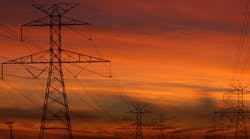Energy Conservation, Customer Programs Must be Priority in Grid Emergencies
“ERCOT and the Texas power grid” was one of the five topics I listed in my January Global Viewpoint column as topics I plan to follow this year. Shortly after I wrote that column, temperatures plummeted in Texas and ERCOT was once again in the news, moving it to the top of the list. For more than 36 hours, beginning late on Dec. 22, the state’s temperatures were nearly as low as they were during Winter Storm Uri in February 2021. I’m sure you remember Uri caused the Texas transmission grid to fail miserably. Since that time, Governor Abbott, state regulators, the legislature, ERCOT, and other state agencies have worked to ensure it doesn’t fail again. As I mentioned last month, the Public Utility Commission (PUC) of Texas chairman Peter Lake and ERCOT CEO Pablo Vegas spoke in a press briefing in late November 2022, ensuring Texans that the grid is “prepared” for winter and that the bulk power system has adequate supply to meet the grid’s and customers’ needs. They, along with Governor Abbot, continued with this messaging until the subfreezing temperatures arrived.
Texas’ transmission grid did not fail, but it came close. ERCOT underestimated the amount of electricity needed to meet customers’ usage by nearly 13 GW. It had to ask the Department of Energy to allow the state to exceed normal federal air quality restrictions to keep the transmission grid operating. In other words, the state had to call on fossil fuel plants that it didn’t plan to use and exceeded federal emission limits.
During the November press briefing I attended, Vegas was optimistic about the grid’s preparedness and the state’s power generation supply. For all of the probable winter scenarios, we expect to have adequate supply to meet the needs of the grid, Vegas said. He explained, however, that Texas has added about 5 GW of load each year for the past three or more years, which is equivalent to adding a city the size of Corpus Christi (350,000 people in 2022) each year. The state’s demand is growing faster than reliable capacity is being added. The amount of thermal generation in the state has remained flat, while most new generation has been solar and wind.
I think it’s important to note that as the transmission system operator, ERCOT has no control over capacity additions or market strategy. It must do its best to keep the grid operating under whatever conditions arise. Because demand has outpaced capacity additions, ERCOT must rely on better grid operation to keep up with load growth, Vegas said. Adding that the agency is taking an aggressive approach to grid management, and reliability is now at the forefront of ERCOTS actions and decisions, but market reform is critical to long-term success.
The Texas PUC unveiled its Phase 2 market redesign proposal near the end of 2022. Energy market reform was high on Texas lawmakers’ agenda when they convened on Jan. 10 to begin their biennial legislative session, so they were anxious to review the PUC’s proposal. It provides a “performance credit mechanism” that would incentivize power generating companies to provide electricity when power reserves are thinnest. It does not give preference to one type of generation over another. Texas Governor Greg Abbott put forth a different, more controversial proposal that would incentivize developers to build natural gas power plants. Critics say this program would increase consumers’ bills without guaranteeing greater reliability because developers would not be required to build new plants even if they pledge to do so. Both plans before the legislature will funnel more money to generation companies, which fared pretty well during Winter Storm Uri when wholesale electricity prices hit nearly $9,000/MWh and averaged just under $1,500/MWh during the three days of subfreezing temperatures. It’s likely that either of these plans will increase customers’ rates.
Texas needs more generation to keep up with demand, and some of it should be baseload power that can be called on during extreme conditions. I don’t understand, however, why demand response, energy efficiency and other conservation programs are not included. It’s time for regulators, utilities in Texas, as well as other states, to create programs that incentivize customers to reduce electricity usage, as well as sell the electricity stored in EVs and generated by rooftop solar to their energy providers. In other words, become prosumers. Demand side management and demand response have been around for decades, but in all my years of buying electricity, I’ve never been offered any such program. These programs and the technologies that support them are commonly discussed within the industry and exist in various places. In many areas of the country, including much of Texas, these programs are used only as a last resort. In fact, Texas PUC Chairman Lake said during the November press briefing, that if necessary, in extreme circumstances, ERCOT will use conservation alerts, industrial demand response and other similar practices.”
It's time for regulators, lawmakers, utilities and consumers to see these programs as the first step in improving grid reliability and resiliency rather than the last. Electricity consumers should be educated on not only the benefits of these programs in improving reliability and resiliency, but also the financial benefits of participating.
I don’t mean to pick on Texas. I live in Texas and think it is a great place. I can see why it is the second fastest growing state in the U.S. That rapid growth creates challenges, however, one of which is providing affordable, reliable and clean electricity to everyone. Texas is just one of many states facing this challenge. We hear often that the electricity industry is going through the biggest transition in history. It’s time to transition to a business model that includes teaching and allowing consumers to be part of the solution. Conservation, customer response and load control programs should not be the strategies of last resort.


